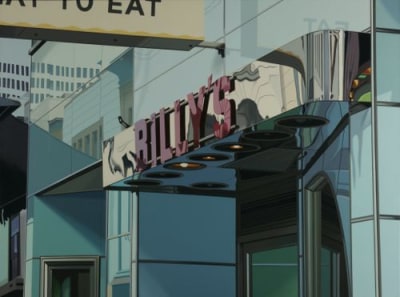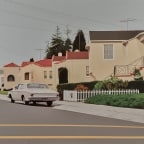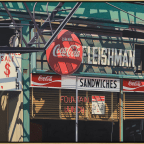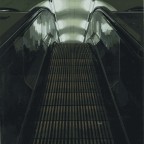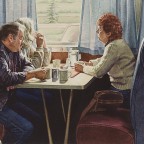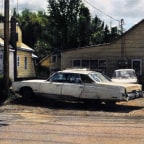Biography
"A beguiling survey of a surprisingly underattended movement"
Art Forum
Waddington Custot presents the second part of the first London retrospective of Photorealist paintings in 50 years. It is only the third major UK survey of the movement, after Photo-Realism: Paintings, sculpture and prints from the Ludwig collection and others at The Serpentine in 1973 and Photorealism: 50 Years of Hyperrealistic Painting at Birmingham Museum and Art Gallery in 2013.
The exhibited paintings are from one of the largest and most important private collections of Photorealist art in the world, shown comprehensively in a public setting for the first time. Gathered over a period of 15 years, the collection comprises around 70 artworks – oil paintings, watercolours and drawings – that span the development of Photorealism, from the mid-1960s to the late-1980s. The collection features works by the movement’s most important protagonists: John Baeder, Robert Bechtle, Charles Bell, Tom Blackwell, Davis Cone, Robert Cottingham, Don Eddy, Richard Estes, Ralph Goings, Ron Kleemann, Richard McLean, David Parrish, John Salt and Ben Schonzeit.
Coined by Louis K. Meisel in 1969, ‘Photorealism’ describes work by a loose group of artists hailing from the East and West coasts of the United States who based their paintings on photography. They embrace the photograph as a subject and incorporate the detached vision of the camera into their work. This gives their paintings an astonishing degree of clarity – a captured moment, fleeting effects of light and shade – that requires significant artistic skill to replicate in paint. The paintings in this group typically depict scenes of everyday American life in the mid-twentieth century. While each artist’s approach is distinct, common subjects include cars, motorcycles, gas stations and symbols of mass consumerism: diners, advertising billboards and neon store signs.
Despite their photographic starting point, these artists are chiefly concerned with paint and the technical challenges of the medium. Photorealists relished capturing reflective surfaces such as glass, chrome and the texture of materials like leather and plastic. Reacting against Abstract Expressionism, which was then dominant in the United States, the artists purported to remove any trace of the human hand, yet hints remain. Photorealist paintings are not, therefore, straight copies of photographs but artistic interpretations. Often, multiple photographs and perspectives are used to create a satisfying composition, with people or objects removed and colours invented; often the original photographs were black and white.
Whilst today a viewer might draw out nostalgia for the American Dream, or note its consumerist underbelly, the Photorealists themselves rejected any grand philosophy or deeper meaning behind their work. Robert Cottingham said “I’m just using the subject as the stepping-off point to compose the painting” and Richard McLean: “I think neutrality is extremely important”.
These paintings force us to question the act of looking itself. Even with today’s proliferation of doctored images we make the easy and false assumption that photographs capture the truth. Depth of field is an artifice, as is cropping. The camera sees monocularly and locks objects into position, the human brain builds a three dimensional picture of a subject through the movement of the head. By painting photographs, the artists highlight the tension between a 2D object depicting a 3D subject.
Don Eddy said in an interview in 1972: “It raises the question of whether you are looking at an illusion of objects in space, or a representation of a flat piece of paper – a photograph – which is in turn a representation of things in space. The idea of being photographic or true to life doesn’t really interest me. It's the references between what we know, what we see, what we think we see and what’s there, between the surface of the canvas and the illusion in the canvas. Those are the real problems it seems to me.”
The scale of this collection is such that the exhibition is split into two parts, with Picture This: Photorealism 1966–1985, pt.1 running from 21 April to 20 May 2023.
继续作品
-
 John Salt, Arrested Vehicle (Silver Upholstery), 1970
oil on canvas
53 x 77 in / 134.5 x 195.7 cm
John Salt, Arrested Vehicle (Silver Upholstery), 1970
oil on canvas
53 x 77 in / 134.5 x 195.7 cm
-
 Richard McLean, The Sheik, 1983
oil on canvas
49 5/8 x 68 in / 126 x 172.7 cm
Richard McLean, The Sheik, 1983
oil on canvas
49 5/8 x 68 in / 126 x 172.7 cm
-
 Ralph Goings , Still Life (Color Pick), 1982
oil on canvas
40 x 60 in / 101.6 x 152.4 cm
Ralph Goings , Still Life (Color Pick), 1982
oil on canvas
40 x 60 in / 101.6 x 152.4 cm
-
 Charles Bell, Gin, 1977
oil on canvas
60 x 72 in / 152.4 x 182.9 cm
Charles Bell, Gin, 1977
oil on canvas
60 x 72 in / 152.4 x 182.9 cm
-
 Richard Estes, Ticket Window, 1969
oil on canvas
30 3/8 x 20 1/2 in / 77.2 x 52 cm
%3Cdiv%20class%3D%22artist%22%3E%3Cspan%20class%3D%22artist%22%3E%3Cstrong%3ERichard%20Estes%3C/strong%3E%3C/span%3E%3C/div%3E%0D%3Cdiv%20class%3D%22title%22%3E%3Cem%3ETicket%20Window%3C/em%3E%2C%201969%3C/div%3E%0D%3Cdiv%20class%3D%22medium%22%3Eoil%20on%20canvas%3C/div%3E%0D%3Cdiv%20class%3D%22dimensions%22%3E30%203/8%20x%2020%201/2%20in%20/%2077.2%20x%2052%20cm%3C/div%3E
Richard Estes, Ticket Window, 1969
oil on canvas
30 3/8 x 20 1/2 in / 77.2 x 52 cm
%3Cdiv%20class%3D%22artist%22%3E%3Cspan%20class%3D%22artist%22%3E%3Cstrong%3ERichard%20Estes%3C/strong%3E%3C/span%3E%3C/div%3E%0D%3Cdiv%20class%3D%22title%22%3E%3Cem%3ETicket%20Window%3C/em%3E%2C%201969%3C/div%3E%0D%3Cdiv%20class%3D%22medium%22%3Eoil%20on%20canvas%3C/div%3E%0D%3Cdiv%20class%3D%22dimensions%22%3E30%203/8%20x%2020%201/2%20in%20/%2077.2%20x%2052%20cm%3C/div%3E -
 Billy’s, 1980
oil on canvas
49 x 66 in
124.5 x 167.6 cm
Billy’s, 1980
oil on canvas
49 x 66 in
124.5 x 167.6 cm











